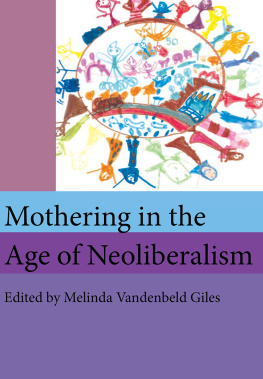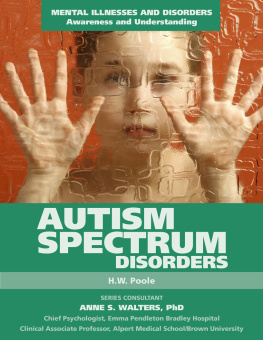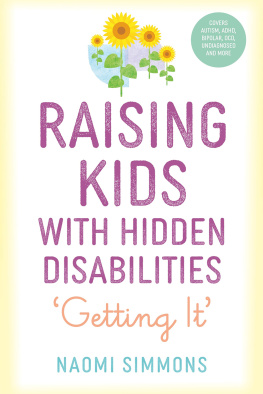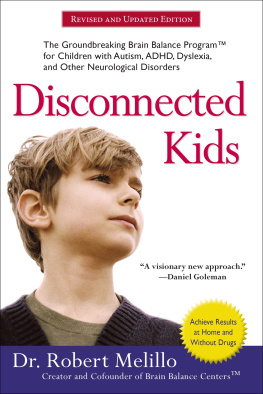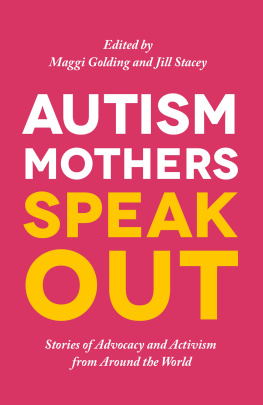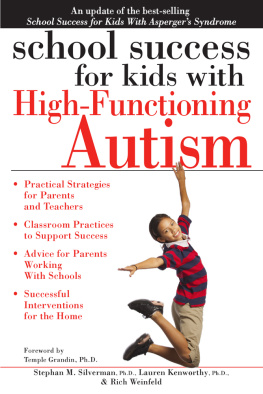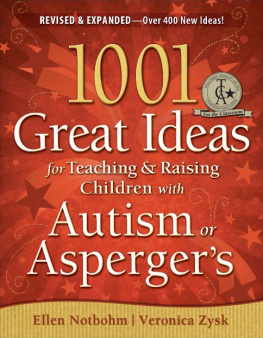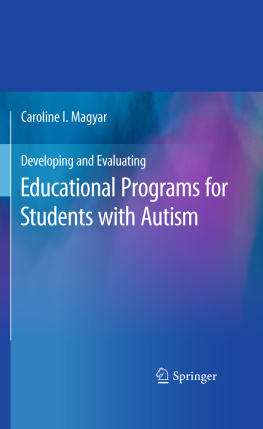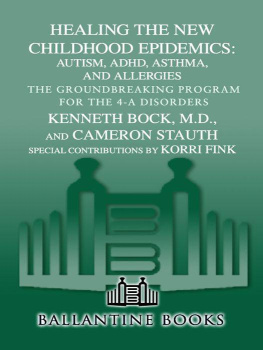Table 2.1. The Forty-Eight Mothers Who Shared Their Stories with Me: A Glance at Their Diversity by Income, Household, and Ethnoracial Location
Table 2.2. The Forty-Eight Mothers Who Shared Their Stories with Me: Detailed Information
Table 6.1. Mothers Raising Children of Color: By Income (Most to Least), Included in Chapter 6
This project has been with me over a long stretch, from my own years of active mothering to finding myself a middle-aged, menopausal empty-nester. There have been many important sources of support and inspiration along the way, particularly my family and my son Saul Tobin; and though much too late for their help, my beloved graduate-school mentors Michael Burawoy and Arlie Hochschild. I am thankful beyond words for the women who so generously shared their experiences of stigma and isolation. I hope my rendering does justice to their stories and I apologize for taking so long. I also thank the many fictive kin, dear friends, colleagues, and students who encouraged me to keep moving forward, especially Winn Wheeler.
Nena Stracuzzi, when a graduate student at the University of New Hampshire, first started me thinking about the ubiquity of invisible disorders and psychiatric medications and the need to put gender at the center of this storyand the Center for the Humanities at the University of New Hampshire provided the fellowship which made much of the fieldwork and initial analysis possible. UNH graduate students Jennifer Esala, Carol Linsted, and Jennifer Vanderminden provided much-needed research assistance and collegiality; and UNH fellow faculty members Jeany Elson, Rebecca Glauber, Sharyn Potter, and Julia Rodriguez were wonderful all-around sounding boards.
New colleagues at Northeastern University as well as members of the body/embodiment working groups at NEU and at the Centre for Gender Research at Uppsala University, Sweden, offered just the right combination of enthusiasm, probing questions, and e-mailed citationsand the best advice for finishing came from my women colleagues, We like short conclusions! NEU graduate research assistant Estye Fenton went above and beyond; our numerous conversations honed my thinking about dense statistical relationships and contemporary advice literature. Katrina Uhly also deserves thanks for organizing the bibliography in record time, as does Constance Smith for offering insights on cover design. The interest of audiences at San Diego State University, Texas A&M, the University of Virginia, and the Race and Gender, Capital and State symposium at University of California, Irvine, was more than hearteningas are the friendship of far-flung colleagues Susan Markens, Andrea Press, Jennifer Reich, Victoria Gonzalez-Rivera, and many others from the extended family of Berkeley sociology. Anonymous reviewers as well as editors of earlier pieces that appeared in Gender & Society, Signs, and the edited collection Vulnerable Bodies/Embodied Boundaries improved my arguments in many ways, as did, in the final innings, anonymous reviewers for NYU Press and the editorial savvy of Ilene Kalish. But I am forever indebted to Vicki Smith, Roger Tobin, and Joan Wolf for slogging through drafts of each of these chaptersoften more than oncein heroic acts of care, intelligence, and patience.
Mother-Child Troubles, Past and Present
In the kid world, too nice equals way nerdy; in the grown-up world, too naughty translates to, well, Ritalin. Below are the holiday seasons best ways to keep pint-size characters stylish and happy, whether theyre strolling the primrose path, walking on the wild sideor caroming back and forth.
Ellen Tien, Dont Make Santa Guess, Dress the Part, Sunday Styles, New York Times, November 25, 2007
The breakfast buffet at Camp Echo starts at a picnic table covered in gingham-patterned oil cloth. Here, children jostle for their morning medications: Zoloft for depression, Abilify for bipolar disorder... and a host of medications for attention deficit disorder.... The dispensing of pills and pancakes is over in minutes, all part of a typical day at a typical sleep-away camp in the Catskills.
Jane Gross, Checklist for Camp: Bug Spray. Sunscreen. Pills, New York Times, July 16, 2006
Every book has a moment of conception, even if the period of gestation, as in this case, is a very long one. This book began as a tiny embryonic idea in 1996 when, like so many mothers of children struggling to navigate their social worlds and perhaps caroming between naughty and nice, I scurried to pick up my second-grade son from the after-school program at our quiet suburban elementary school. Once home, he hesitated, but then burst out with his half-secret question, as if hed learned some new swear word on the playground: Mom? Sean was going, Your mother has ADD. Your mother has ADD. Do you have it? What is it?
Wow: your mother has ADD. My colleagues at work thought this was simply hilarious, the new yo mama of the nice white burbs. My own your mother has ADD seemed to displace stigmatized difference from a boys body to a mothers brain. This thought was, of course, troubling personally, but what did it signal about our culture if seven year-old boys hurled such labels for invisible brain imbalances and hard-wiring flaws at mothers and sons?
This book begins from the several very clearest factors signaled: the growing prevalence of diagnoses like ADD among U.S. kids, the growing cultural preoccupation with such invisible disabilities and the medications used to treat them, and the pressures and stigma mothers face in dealing with these new diagnoses and treatments. But there are also several larger factors, just behind the scenes, I believe are signaled which figure importantly in this book. First, this is a book about persistence and change in twenty-first-century U.S. families and gender arrangements. Such arrangements have been changed by the wholesale entry of mothers into the labor force and, as I will come to below, the declining opportunities for mens breadwinning. Yet this is, nonetheless, a book about how we persist in assigning mothers primary responsibility for children and the major share of blame when things go wrong. Second, this is also a book about the New Economy and the postindustrial workers it now requires, with sharp divides between its winners and losers. And third, this book is about the neoliberal ideology or belief system which undergirds this high-stakes New Economy, a belief system valuing individual over public responsibility or government protection, beliefs that have created a more challenging context for family life and childrearing in the United States today. In the chapters to follow, I continue to unravel the influence of these three interrelated social factors while moving squarely to the major project of this book: examining how mothers differently situated in this reconfigured social world navigate its institutional arenas on behalf of vulnerable children, taking personal responsibility for their entrance into a yet more perilous future.


